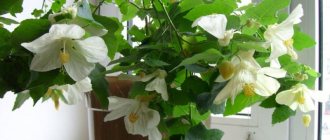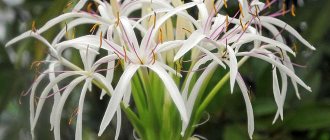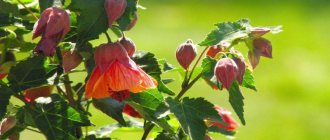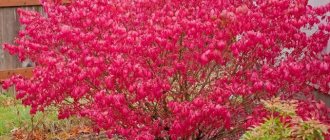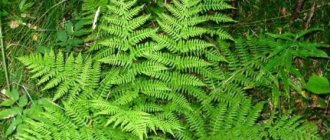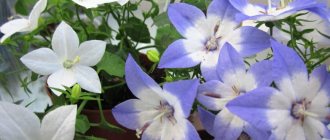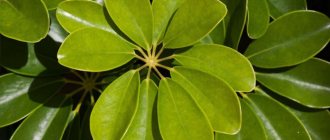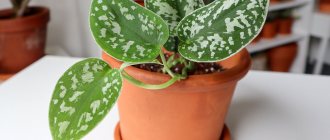Acquaintance
The genus of domestic maple belongs to the malvaceae family. It grows naturally in the tropics and subtropics, where it is warm and humid. There it grows in the form of bushes, small trees or perennial grass and has more than 100 species.
Abutilon is the closest relative of indoor hibiscus and mallow.
Abutilon is also called house maple or indoor maple because its leaves are very similar to maple leaves. They have a blade shape, are very flexible and delicate, the edges have small teeth. In India, it is known as rope because its coarse fiber is used to make ropes and also weave various products.
Abutilon flower is a very famous, popular, unpretentious plant that is successfully grown all over the world. It is valued for its rapid growth and spectacular flowering. In good growing conditions, the shrub reaches two meters in height and blooms generously, as seen in the photo, possibly throughout the year.
Important points
When growing Abutilone, it should be noted that the plant:
- does not tolerate direct sunlight;
- afraid of drafts;
- perfect for organizing flower beds;
- in the summer you will feel better in the open ground;
- Suitable for greenhouses and large rooms.
Abutilone is a fast-growing large plant that requires free placement, so it is recommended to grow it in spacious rooms. This abundantly and long-blooming tree with delicate foliage will decorate any interior.
Types of abutilone
Hybrid and decorative types of abutilon are grown at home. It is the variety of hybrid forms of indoor maple that makes it possible to admire plants of any size with a wide variety of leaf and flower colors.
The leaves of adult plants are quite large, up to 10 centimeters. They have a green, motley or spotted color.
The beautiful abutilon flowers, which look like Chinese lanterns or bells, will not leave anyone indifferent. Inflorescences on long stalks can be red, pink, orange, white, golden and other shades of the rainbow. Depending on the shape of the flower, terry and simple types of shrubs are distinguished. Flowering lasts from early spring to late autumn.
Psychologists believe that abutilone has a calming effect, helps relieve nervous tension and even relieve depression.
The most popular types of indoor maple.
Abutilon Juliet
Many gardeners love this type of indoor maple. After all, the plant is very unpretentious, does not require light, and grows quickly. Within a year, Abutilon Juliet grows up to half a meter in height. The plant pleases with its flowers, without ceasing, all year round. The flowers are bright, large, each about six centimeters in diameter. It begins to bloom six months after sowing the seeds.
Abutilon Amazonian
This species is also known as Abutilon megapotamus, or weeping Chinese lantern. Each flower of the plant is very similar to a lantern. It is yellow in color, has a crimson beginning and a fiery red corolla. In good habitat conditions, Abutilon megapotamii blooms almost constantly. The leaves are medium in size, oblong in shape with uneven teeth.
Abutilon Bella
A very compact and decorative plant, it is characterized by great branching and large bright flowers that practically fill the branches. Pink, white or gold flowers look spectacular against green foliage. Abutilon Bella does not grow higher than forty centimeters, it does not need pruning or pinching and blooms beautifully all year round. That's why all gardeners adore him. The bush will perfectly complement any interior design; bright flowers will fill the house with comfort and beauty. This species is similar to the Abutilon variety - Isabella, which is characterized by bright flowers of even larger size.
Abutilon Bellevue
This type of Abutilon is a hybrid, the Bellevue mixture forms a plant up to two meters in height, with timely pruning and proper care, it has the shape of a beautiful and lush bush. The flowers of the bush can be of all colors of the rainbow.
Abutilone Victorian lady
Also known as Abutilon terry. A medium-growing variety, the flowers are lush, double, and have a soft pink color.
Grape leaf abutilone
The leaves of the plant are similar to grape leaves, hence the name of the variety. They are green, velvety, have a small fluff underneath, the leaves are about fifteen centimeters long. Several flowers are collected in clusters and fall beautifully on long stems. The most common flowers are blue and lilac. Flowering occurs in May.
Flowering and fruiting
Abutilon has lobed leaves, reaching a length of 10–20 cm, resembling maple leaves in appearance, located on long stalks. The leaf blade is slightly elongated, soft, with embossed edges and a pointed tip, painted bright green. In hybrid species, the leaves may be variegated, with a border or spots.
The shoots are long, branching, can reach a length of three meters, and are colored brownish-red.
Flowers are located in the leaf axils singly or in inflorescences. Depending on the variety, they can be simple, double or semi-double. The buds have a bell-shaped, funnel-shaped, rounded shape. The color of the petals is varied: white, yellow, pale pink, bright red. Abutilone is easy to care for and does not require special conditions. More than 150 species of this plant are known.
Caring for abutilone at home
All varieties of indoor maple are unpretentious in care. But in order to enjoy a beautifully flowering plant, you must follow some rules.
- Lighting and temperature conditions
Indoor maple Abutilon is a very light-loving flower. A room with a lot of daylight is suitable for him, but at the same time he will not like too bright light. In summer, you can take it out into the fresh air, onto a balcony or veranda, choosing a shaded place. If there is a lack of light, the plant will not want to bloom.
In summer, the optimal temperature in the room where Abutilon grows should be no lower than +20 - +25 degrees. In winter, the temperature may drop to +10 - +15 degrees, but it should be remembered that if the plant stays in a room with a temperature of +10 degrees for a long time, it will begin to dry out.
- Watering
During the period of active growth of the bush, that is, in the warm season, home maple needs regular and abundant watering. Watering should not be reduced while the plant is blooming. A couple of hours after watering, the excess water that has accumulated in the pan needs to be poured out. Starting from November, watering is reduced and carried out moderately throughout the rest period, until February.
Remember
When the soil becomes waterlogged or dries out, abutilon can shed its thick crown and flowers.
- Air humidity
The plant is very moisture-loving, so if the room is hot, it must be frequently sprayed with water. When the bush blooms, spraying should be done carefully, avoiding water getting on the flowers.
- Fertilizing the plant
Abutilone needs feeding: mineral and organic fertilizers. Fertilize the plant regularly once a week. In early spring, when the plant is actively growing, gaining green mass, it is recommended to apply nitrogen, and before flowering it is better to fertilize the bush with phosphorus and potassium. There is no need to fertilize the plant in winter.
- Abutilone pruning
Scheme for pruning indoor plants
To get a bush of the correct size and required height, the plant needs timely pruning. In addition, Abutilon grows very quickly and pruning shoots is very important for it.
In early spring, before active growth begins, shoots are shortened by 1/3 or 2/3 of their length. Pruning indoor maple not only contributes to the formation of a beautiful crown, but also stimulates abundant flowering.
For young plants, pinching the tops should be done. Next, the bush needs to be moved to a warm room, watered and fed abundantly.
- Abutilone transplant
Abutilon needs annual replanting. You should not choose a container for replanting that is much larger than the previous one. The plant will begin to bloom once its roots have completely covered the soil. It is better to take soil for planting from flower shops, where it is already saturated with beneficial properties and disinfected from parasites.
Humidity and watering
Abutilon should be watered abundantly in the summer, and it is also necessary to ensure that the soil always remains slightly moist. By winter, watering should be gradually reduced, avoiding drying out. Overwatering or drought can lead to the loss of a dense crown of leaves.
Abutilon is not too demanding on air humidity , but will not refuse spraying in winter when the air in the room is dry. You can moisten its leaves or the space next to it.
How to grow Abutilon
Indoor maple can reproduce using cuttings or seeds.
Propagation by cuttings
For cuttings, choose a cutting up to twelve centimeters long with a flexible trunk. The buds and lower leaves are torn off from them. To plant cuttings, it is better to use a ready-made store-bought substrate or a mixture of peat and sand. The cuttings should be planted in small cups, after which they should be covered with jars. In this way, greenhouse conditions are created, and within a month the root system of seedlings is formed. During this period they should be watered, ventilated and sprayed. Next, the sprouted cuttings are transplanted into pots with a diameter of no more than seven centimeters.
Remember
Abutilon can be propagated by cuttings at any time of the year, but the most favorable period for this is the month of August.
Propagation by seeds
Growing Abutilon from seeds at home is very simple. Those who have already done this know that the seeds of this plant have almost 100% germination rate.
Before sowing seeds, it is necessary to prepare the soil. It is recommended to sift the soil so that it is looser and retains moisture better, and also to treat it with a solution of potassium permanganate to disinfect it from various fungi and bacteria. To prepare the soil, you can take: two parts of peat and leaf soil, one part each of river sand and vermiculite.
Abutilone seeds
Before sowing, it is imperative to check the integrity of the seed shell; if the shell is damaged, then such seeds are unlikely to germinate. Good seeds should be dark in color. Before planting, they can be soaked simply in warm water or in a growth stimulator solution for twelve hours. Plant the seeds in moist soil to a depth of about five millimeters, cover with film and place in a warm, sunny place. After three weeks, the first shoots appear.
When the first maple leaf appears, it means that the seedlings are ready for picking. In order for the plant to grow faster, for replanting you should take cups no more than seven centimeters in diameter.
Now you just need to properly care for the seedlings: monitor lighting, temperature, humidity. Apply mineral fertilizers once a month.
Growing the plant this way makes it much stronger and more resilient. In addition, when growing Abutilon from seeds, you can choose exactly the variety that you like the most, you can even sow several different varieties in one pot.
Already six months after sowing the Abutolin seeds, the plant will delight others with its flowers.
Transplantation and feeding
The best soil for abutilone is a mixture in equal proportions :
- leaf soil;
- humus soil;
- turf;
- peat;
- sand.
You can also use ready-made soil for begonias, primroses and pelargoniums. Maple is fertilized from spring to autumn, twice a month, with fertilizers for flowering plants. If the plant continues to bloom in winter, you don’t have to stop feeding.
Young abutilons are replanted every year in the spring, adults - once every two to three years. The pot for replanting should be taken 2 cm larger than the previous one. It is important to remember that the plant blooms only when the entire volume of its pot is filled with roots.
Diseases and pests of home maple
Dangerous pests for Abutilon are scale insects, mealybugs, whiteflies, aphids and spider mites. It is important to frequently inspect the plant, especially the lower leaves, which often become a haven for various parasites. If the indoor maple is nevertheless exposed to pests, then they need to be combated with special chemicals that are available in flower shops.
Common problems
Although the Abutilon maple is an unpretentious plant, if the care technology is not followed, some problems arise:
- leaves and tops dry and curl - bright light, lack of watering or dry air;
- leaves turn yellow and become spotted - lack of microelements;
- stems stretch out - lack of lighting;
- the plant sheds leaves and buds - excessive soil moisture, or, conversely, its drying out, strong drafts, temperature changes.
Abutilon - indoor maple
Anyone can grow the beautiful Abutilon, an indoor maple tree. You just need to give it a little care and attention, and the plant will thank you with lush branches of leaves and bright flowers. Collectors of flowering plants enjoy growing this spectacular flowering shrub.
Indoor abutilone: flower description
Abutilon (indoor maple) is a plant popular among gardeners due to its bright flowering, which lasts almost all year round. It is also easy to care for, making it suitable for beginner flower lovers, growing quickly and propagating easily.
Abutilone in the wild
Abutilon has a number of other names that have taken root among the people. The most popular is indoor maple. It came from its specific shape of leaves, reminiscent of maple. Another name - Chinese lanterns - comes from the bright, downward-pointing flowers, similar to the lanterns of China.
For your information! Abutilon is also called ropewort, since its shoots in China and India are used to make hard fiber, from which burlap, ropes, and ropes are obtained.
Abutilon leaves are quite wide and quickly evaporate moisture. Due to this, you can increase the humidity in a room with dry air. The domestic maple is not a poisonous plant, it does not cause allergies, so it can be kept in homes where there are small children and pets who can encroach on its bright appearance and want to taste a beautiful leaf or a bright flower. In addition, the plant has a number of medicinal properties that can be used by lovers of traditional medicine in the treatment of certain diseases.
Indoor abutilone is a plant whose appearance depends on the variety. Breeders are trying, and new varieties are constantly appearing. They are united by maple-shaped leaves and drooping bright, fairly large flowers.
Variety of indoor abutilone varieties
Evergreen ornamental shrubs
Evergreen shrubs readily delight with their beauty all year round. We recommend paying attention to these varieties!
Boxwood
Boxwood is a landscaping classic among landscape designers. It takes root well, is not afraid of wind and drafts, feels great in the shade or in unfavorable soil, and also forms well when pruned.
Photo: ru.useful-plants.net
Mahonia holly
An interesting and unusual plant immediately attracts attention with its intricate carved leaves. And in the spring the bush becomes overgrown with the same bizarre spikelet inflorescences.
Photo: photokonkursy.ru
Arbutus
Most likely, you know this shrub under the name strawberry tree. And its fruits really resemble strawberries, only they are larger and tasteless. Arbutus grows slowly and decorates the area for years.
Photo: fcomfort.ru
Iberis
It is a heat-loving, evergreen and low-growing shrub that branches heavily. Dark green leaves form a lush, dense crown. During flowering, the buds cover the greenery almost completely.
Photo: cveti-sad.ru
Callistemon
This amazing plant amazes with its original inflorescences, which resemble multi-colored dust brushes. Callistemon blooms in summer, its leaves smell pleasant, and it adapts perfectly to any conditions.
Photo: geographylists.com
The best ornamental shrubs for the Moscow region
These beautiful ornamental species thrive in the changeable climate of the Moscow region. So feel free to choose options for your dacha!
European forsythia
The bright yellow flowers bloom in early spring and will brighten up the area just after the dark, gray winter. Forsythia grows well in width, but does not tolerate excess moisture at the roots.
Photo: oir.mobi
Spiraea Wangutta
The shrub thrives in changeable conditions, and even in large cities. Spirea blooms with lush snow-white inflorescences, and in favorable weather in good seasons - even twice a year.
Photo: spb.tiu.ru
Louiseania triloba
This shrub is good any time because it is covered in delicate pink flowers in spring, and by fall the foliage turns a bright orange hue. Louiseania loves good light and needs protection from strong winds.
Photo: pro-orehi.ru
Japanese quince
The culture attracts with very beautiful bright flowers in all shades of pink, orange or white. By mid-autumn it bears fruit. Despite its exotic origin, this quince thrives in the Moscow region, both on wet and sandy soils.
Photo: kurskaya-obl.tiu.ru
Popular types and varieties
The genus Abutilon has about 150 species. This plant is native to the tropics and subtropics of Southeast Asia, Australia, and Brazil. It is also called rope plant, because in India ropes, ropes, and burlap are produced from its fibrous stem.
The following varieties are widespread:
Vine-leaved - grows up to 2 m in length, quite branched. The stems are covered with soft fluff. Leaves are rich green in color, up to 20 cm long. They come with 3-5 lobes. The inflorescences are collected in groups, the pedicels are up to 15 cm long. The plant blooms in May. Colors vary from blue to lilac.
Striped (spotted, painted) - has short, non-lignified shoots. The leaves are heart-shaped with long petioles of 3-6 lobes. There are white torn spots along the edges. The flowers are on long stalks. The inflorescences are golden with red veins. They bloom from June to September.
Sello is one of the varieties of striped Abutilon. Can grow up to 2 m. Stems are straight, branched. Their surface has a velvety edge. The leaves are green, smooth, trifoliate. The flowers are pale lilac with pink veins. Flowering begins in June and can continue until the end of autumn.
Megapotamian (Brazilian, Chinese lantern) - grows up to 1.5 m. The stems are very drooping, the leaves are elongated, jagged at the edges. The flowers are located singly on the peduncle in the form of a convex ribbed corolla. The color is predominantly red.
Hybrid - a species that was obtained by crossing Darwin's abitulon and variegated. The plant is about 1.5 m high with three-lobed dark green leaves. They are slightly pubescent on top. The flowers are collected in several pieces and have the shape of a bell. Colors may vary.
Bella is a plant 40-60 cm high. The leaves are elongated, ovate. Bell-shaped flowers with 5 petals. They come in red, orange, apricot, and pink colors.
Problems with abutilone
The plant sheds buds and leaves
Due to improper watering and changes in temperature, abutilon gets sick. The disease manifests itself in the falling of leaves and buds. A lack or overdose of fluid does not allow the plant to develop normally.
The leaves of the flower become pale
This behavior occurs due to lack of light. The flower is transferred to a place with good lighting. The bushes are gradually accustomed to light. Leave it in the light for a couple of hours. Then the time is increased. If this place is not available, then it is better to install a special lamp.
The leaves are drying
When the air humidity is too low, the tips of the abutilon leaves dry out. If the weather is hot, then the sheets are sprayed with water. But the liquid should not be allowed to get on the flowers. If the air is dry due to heating, then place a container of water next to the pot to humidify the air.
Easy care
The shrub is really very unpretentious. Loves the sun, but can also grow in partial shade. It is undemanding to soils, but is responsive to fertilizing with organic matter. After this, the bush grows more powerful and blooms longer. Drought resistant. It is not affected by pests and does not suffer from fungal diseases. In order for the maple-raspberry to bush better, you need to shorten the stems by 25-30 cm in the spring. The bush will produce side shoots and you will get more flowers. Shelter for the winter is not required. Doesn't freeze. It can even grow in Novosibirsk. It loves to crawl around the area, so its growth must be limited. It reproduces easily: you can simply dig up the excess shoots and transplant them to the right place. Survival rate 100%.
In S. Geichenko’s book “At the Lukomorye” we read the following lines: “For a long time I searched for a bush, which has become an exceptional rarity in our time, maple-raspberry. I found it twenty kilometers from Mikhailovsky, in the former estate of Pushkin’s friend Eupraxia Nikolaevna Vrevskaya (Wulf), who once, while visiting, Pushkin planted trees in the garden.
Today, the bushes of this flower again decorate the poet’s garden. The leaves of the flower are similar to maple leaves. It blooms like a rosehip, is fragrant like a raspberry, and cheerful like a festive chintz. It blooms in spring and summer. It blooms and blooms..."
It turns out that A.S. Pushkin also admired the flowering of this bush. I inhaled its wonderful aroma.
America is considered the birthplace of maple-raspberry. There is even a California variety.
